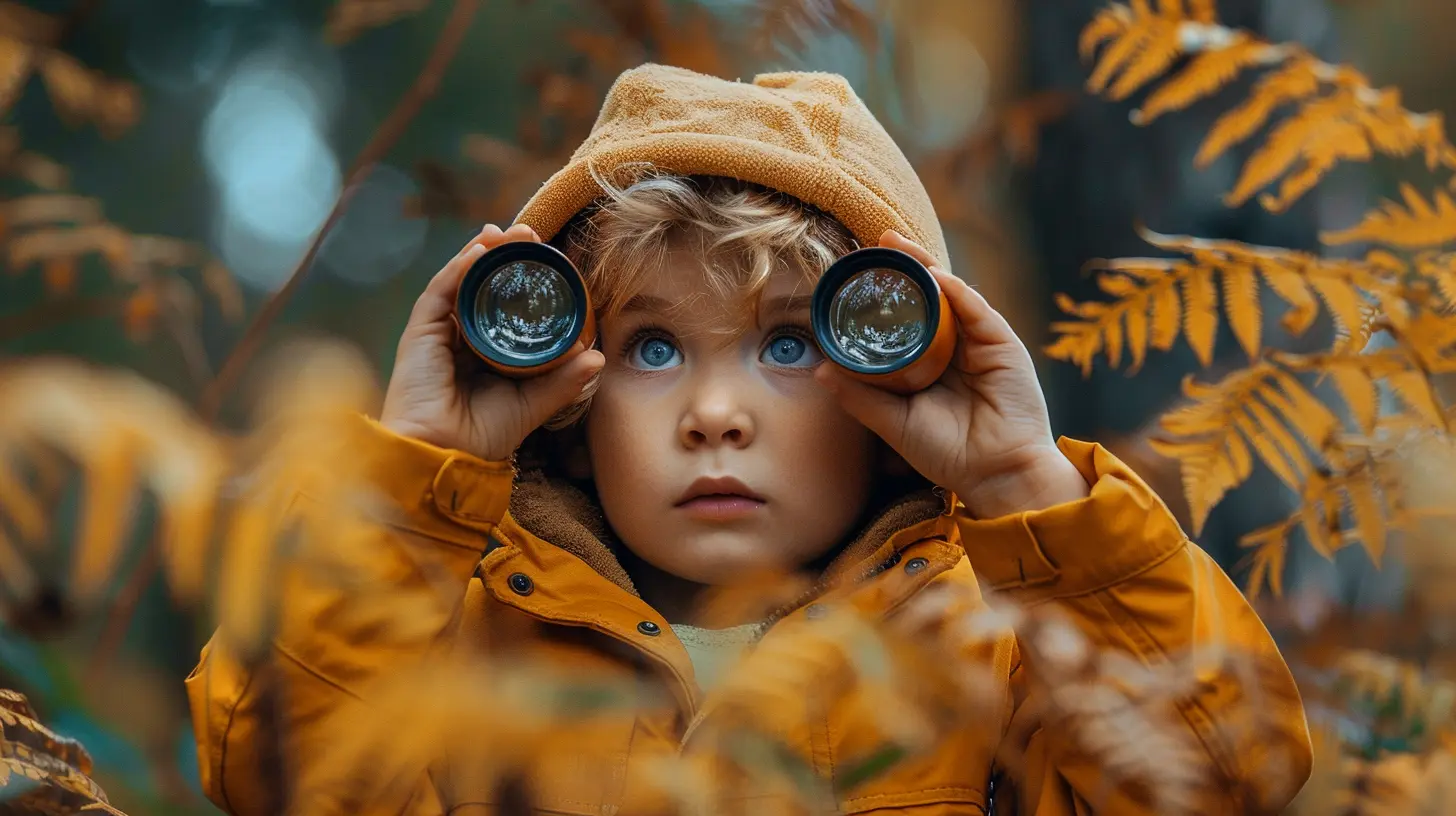The Power of Curiosity: Fueling Cognitive Growth in Children
15 August 2025
Curiosity—it's what makes kids poke their noses into places they probably shouldn’t, ask a million "why" questions before breakfast, and take things apart just to see how they work. While it may sometimes drive parents to the edge of their patience, this relentless quest for knowledge is actually one of the most powerful tools for cognitive growth.
But how exactly does curiosity shape a child’s brain? And how can we, as parents, teachers, and caregivers, nurture this natural hunger for knowledge? Let’s dive into the science and psychology behind curiosity and explore how it fuels cognitive development in children. 
Why Curiosity Matters in Childhood Development
You’ve probably heard the phrase, “Curiosity killed the cat,” but in reality, curiosity is what helps children thrive. Research shows that children who are naturally inquisitive tend to perform better academically, develop strong problem-solving skills, and even have better memory retention.Curiosity is the driving force behind creativity, innovation, and lifelong learning. It keeps children engaged and motivated, making them more likely to grasp complex concepts. But more than just academic success, curiosity helps kids develop emotional intelligence, social skills, and resilience—key ingredients for success in life. 
The Science Behind Curiosity and Brain Development
Curiosity isn’t just an abstract concept; it has a concrete impact on the brain. Here’s how it works:1. Curiosity Lights Up the Brain’s Reward System
When kids are curious about something, their brains release dopamine, a neurotransmitter often associated with pleasure and motivation. This chemical reaction makes learning feel rewarding and exciting. Studies even suggest that learning while in a state of curiosity improves knowledge retention.2. It Strengthens Neural Connections
Engaging in curious exploration strengthens neural pathways, creating more efficient connections in the brain. Every time a child asks a question, explores something new, or solves a problem, their brain is literally growing stronger.3. It Boosts Memory Retention
Ever notice how children remember the most random facts about dinosaurs, space, or their favorite cartoons? That’s curiosity at work! Studies show that when kids are genuinely interested in a topic, they absorb and retain information more effectively.4. It Encourages Critical Thinking
Curiosity stimulates critical thinking by encouraging kids to analyze, ask deeper questions, and seek answers independently. Instead of just memorizing facts, they begin to question why things work the way they do, leading to a deeper understanding of the world around them.
How to Nurture Curiosity in Children
While curiosity is natural, it needs to be nurtured and encouraged. Here are some ways to help fuel your child’s inquisitive nature:1. Encourage Questions (Even the Endless Ones!)
Children are naturally wired to ask questions. Instead of brushing them off with a “Because I said so,” try engaging in thoughtful discussions. When a child asks, “Why is the sky blue?” respond with, “Great question! What do you think?” This not only keeps their curiosity alive but also boosts their confidence in problem-solving.2. Create a Stimulating Environment
A boring environment leads to a bored child. Fill your child’s surroundings with books, puzzles, building blocks, and craft supplies. Let them explore nature, visit museums, or experiment with simple science projects. The more diverse their experiences, the more curious they’ll become.3. Allow for Unstructured Play
As much as structured learning is important, kids need free time to explore on their own. Unstructured play allows children to experiment, invent, and discover things naturally. Whether it's building a fort out of pillows or making up a new game, creativity flourishes when kids have the freedom to explore.4. Model Curiosity Yourself
Kids mimic what they see. Show them that curiosity doesn’t stop in childhood. Ask questions, read books, try new things, and demonstrate that learning is a lifelong adventure. When they see you excited about discovery, they’ll be more likely to follow suit.5. Embrace Mistakes as Learning Opportunities
Children often hesitate to ask questions or try new things for fear of failure. Instead of focusing on perfection, encourage them to see mistakes as stepping stones to knowledge. If they build a tower and it falls, ask them, “Why do you think that happened? How can we make it stronger?” Teaching them to embrace failure fosters resilience and confidence.6. Introduce Hands-On Learning Experiences
Nothing sparks curiosity like hands-on learning. A child may not care about the concept of buoyancy, but throw in a bathtub experiment with objects that sink and float, and suddenly, they’re hooked! Science experiments, cooking, gardening, and building projects are fantastic ways to encourage active learning.
The Link Between Curiosity and Academic Success
Curious children tend to be better learners. Why? Because curiosity creates intrinsic motivation—learning for the sake of enjoyment rather than for grades or rewards. Studies have found that children who are naturally curious are more engaged in school, tend to ask more questions, and often have higher academic achievements.A curious child won’t just memorize facts for a test; they’ll want to understand why things work. This deeper level of engagement leads to stronger comprehension, better analytical skills, and long-term knowledge retention.
The Role of Technology in Today’s Curious Minds
Technology often gets a bad rap when it comes to childhood development, but when used wisely, it can be a powerful tool for encouraging curiosity.- Educational Videos & Documentaries – Platforms like YouTube Kids and National Geographic offer fascinating content that can spark curiosity about science, history, and the world.
- Interactive Apps & Games – Well-designed apps like Duolingo (for language learning) or Khan Academy (for various subjects) can make learning exciting.
- Virtual Experiences – While nothing beats real-world exploration, virtual museum tours, space simulations, and geography apps can open up a world of discovery.
Of course, balance is key. Technology should supplement real-world experiences, not replace them. Ensure screen time is interactive and educational rather than passive entertainment.
Final Thoughts
Curiosity is one of the greatest gifts children possess. It’s what drives them to question, explore, and discover the world around them. As parents, teachers, and caregivers, it’s our responsibility to nurture this natural inclination and create an environment where curiosity is celebrated.By encouraging questions, providing hands-on experiences, and fostering a love of lifelong learning, we help children build the cognitive tools they need for success. So the next time your child asks, “Why is the grass green?” or “How do birds fly?”, take a moment to appreciate the magic of curiosity—because in those questions lies the foundation of knowledge, creativity, and innovation.
Let’s not suppress curiosity. Let’s fuel it. After all, today’s curious minds are tomorrow’s great thinkers, inventors, and problem solvers.
all images in this post were generated using AI tools
Category:
Cognitive DevelopmentAuthor:

Ember Forbes
Discussion
rate this article
1 comments
Nicole McAnally
Curiosity is essential for cognitive development; it fosters creativity and lifelong learning.
September 23, 2025 at 4:44 PM

Ember Forbes
Thank you for your insightful comment! I agree—curiosity truly drives creativity and supports lifelong learning, playing a vital role in children's cognitive development.


